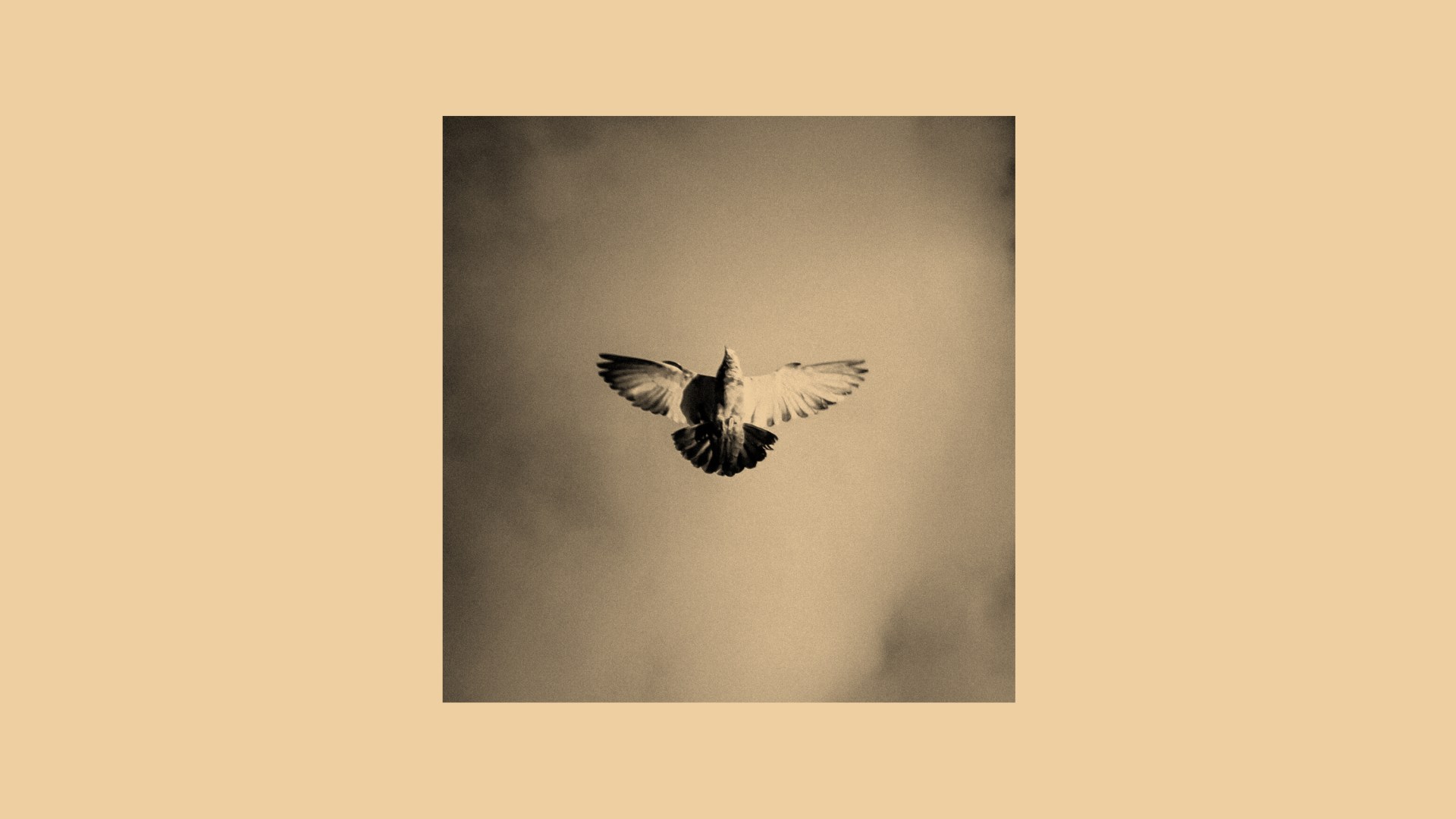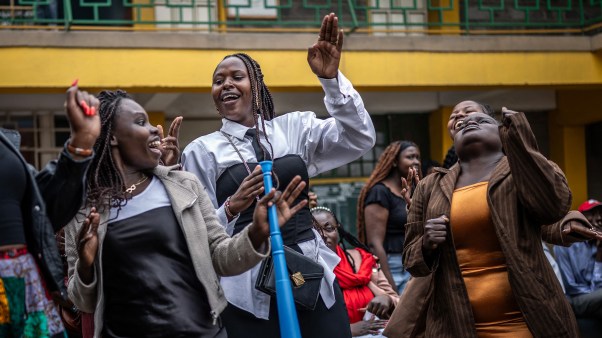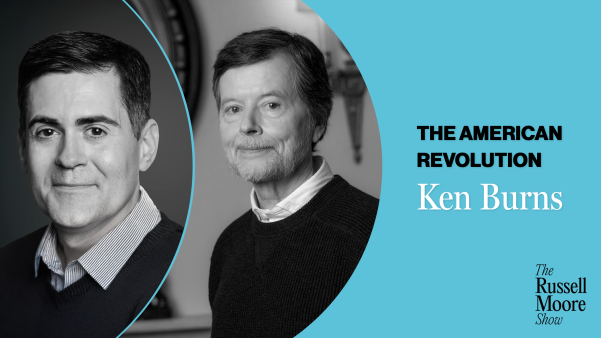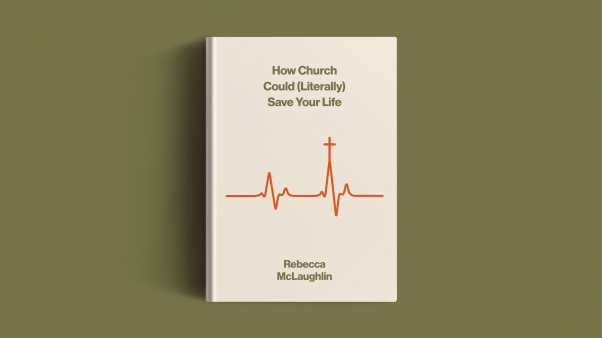This piece was adapted from Russell Moore’s newsletter. Subscribe here.
If you wanted to convey to someone in a single image the idea that the church is glorious, holy, and ultimately triumphant, how would you do it?
I suppose you might start with a marketing plan and choose, like any other institution, something to signify trust, strength, and power. Nations, corporations, and even middle school basketball teams adopt symbols such as bears or eagles or rising suns. What you probably wouldn’t choose, however, is the face of a turncoat sobbing with shame.
That’s why I was reluctant to say yes when a colleague pitched a representation of Peter hearing the rooster crow for Christianity Today’s March/April issue cover art. “That’s too negative,” I said. “We want the picture of a bride coming down out of heaven adorned for her husband (Rev. 21:2) or an army awesome with banners (Song 6:10).” Not a shame-faced man after his denial of the Son of God.
It wasn’t until I actually saw the artwork that I realized how wrong I was. Illustrator Aedan Peterson did not soften the agony of the jarringly beautiful scene. One can feel in the posture and visage of the fallen disciple what it would be like to live out Jesus’ words, “Truly, I tell you, this very night, before the rooster crows twice, you will deny me three times” (Mark 14:30). The art prompts the body to feel Peter’s involuntary loss of control at that moment: “And he broke down and wept” (v. 72).
What I missed at first is that this scene really isn’t about the pathos of Peter. It’s about what’s going on in the background behind him: a bird in flight, representative of a struggle that starts at the beginning of the biblical canon and continues all the way to the end.
One bird is never pictured with the scene of Peter’s denial but shows up elsewhere in Scripture: the raven. Ravens are sometimes depicted positively in the Bible, such as in carrying food to the starving prophet Elijah to sustain him in his desert escape from Ahab and Jezebel (1 Kings 17:4–6).
But there’s a reason Edgar Allan Poe chose a raven to deliver the ominous line “Nevermore” in his unnerving poem. In Scripture, ravens are pronounced unclean, and the people of Israel are forbidden to eat them (Deut. 14:14), because the birds are carrion eaters. To see a raven, as to see a vulture, is to see a sign of the presence of death.
After the Flood, the first bird that Noah sent out as an intelligence-gathering operation was a raven, which went, Genesis tells us, “to and fro until the waters were dried up from the earth” (8:7). The raven could survive capably in such a situation—with corpses everywhere on which to feed.
Peter did not see a literal raven in his moment by the fire, but he did see the omen of death. One of the indignities and horrors of crucifixion in the Roman world was that those left on the crosses would often be eaten by scavenging birds. In the arrest of Jesus, Peter could see such a future for himself.
Literary scholar Erich Auerbach once described this scene as revolutionary and unprecedented in the literature of the time: the depiction of the emotional anguish not of a hero or king or god but of a common fisherman. The Eastern Orthodox theologian David Bentley Hart wrote too that this scene must have “seemed to its first readers to be an aesthetic mistake; for Peter, as a rustic, could not possibly have been a worthy object of a well-bred man’s sympathy, nor could his grief possibly have possessed the sort of tragic dignity necessary to make it worthy of anyone’s notice.”
Peter’s anguish and hopelessness in the face of death—that of his rabbi and likely his own—is crucial to his story of denial, included in all four Gospels. After all, when told of Jesus’ impending crucifixion, Peter’s first response was to rattle his swords. “Far be it from you, Lord! This shall never happen to you,” Peter said (Matt. 16:22). Peter saw the defeat of the Messiah by Rome to be a hindrance to the plan of the dawning of the kingdom of God, on earth as it is in heaven.
But Jesus said that Peter’s bravado was actually the hindrance—that it was carnal, even satanic (v. 23). Jesus continued, “If anyone would come after me, let him deny himself and take up his cross and follow me. For whoever would save his life will lose it, but whoever loses his life for my sake will find it” (vv. 24–25).
When Jesus is arrested, Peter’s first response is violence—to follow the way of the raven toward the death of his enemies, cutting off the ear of the servant of the high priest, earning once again a rebuke from Jesus: “Put your sword back into its place. For all who take the sword will perish by the sword” (26:52).
Crouched over the charcoal fire, Peter later tries to hide his Galilean background and his affiliation with the teacher out of a sense of self-protection. He doesn’t want to die. And that’s when he hears the call of another bird.
The crowing of the rooster is about more than just one man, even a man as significant as the apostle Peter, who was the first to confess Jesus as “the Christ, the Son of the living God” (16:16). Jesus gave him a name that meant “rock” to convey stability, fortitude, and dependability, saying, “Upon this rock I will build my church and the gates of hell shall not prevail against it” (v. 18).
With a name like that, we might wish to see a heroic, stalwart Peter as a model for us that we too can hold fast as the people of God. But if that’s what Jesus had shown us, we could not survive the shaking of the church. We would lose heart. We might even doubt that the church could withstand a time of secularization, dechurching, repetitive scandal, and scary global threats.
Where are the rock-like pillars of stability who can take us there? All we have are weak, fumbling Christians like us, who know how many times we have said to the outside world with our thoughts or actions or fear, with our lack of love or faith or hope, “I do not know the man” (26:74). We are not heroes, and we have none around us.
The cry of the rooster was one of the most familiar sounds in the life cycle of a first-century person, as common as the sound of an iPhone alarm is to us. It would probably have had the same effect then as it does now, causing the person hearing it to initially grumble.
We want to stay asleep, but the rooster’s cry is to wake us up. And part of what Peter had to hear is that he is not as strong as he thought he was. Neither are we. That’s why the sound of the rooster’s crowing—as painful as it is to hear—is actually grace.
The reason Peter wept when he heard that chicken’s call is that Jesus had told him ahead of time that this sound would coincide with Peter having denied him three times. If we get what’s really happening here, it can change everything.
If Jesus had simply nodded at all of Peter’s vows of commitment to the death, Peter would have had reason, after he had fallen into what he said he would never do, to despair. He would have thought that Jesus’ commitment to him was based on Peter’s own performance, on his own heroism. He would have believed that Jesus had simply thought him to be stronger or more faithful than he actually was.
But Jesus knew what would happen before the rooster crowed. And even knowing Peter’s fragility and flaw, Jesus said to him, in the same scene, “I have prayed for you that your faith may not fail. And when you have turned again, strengthen your brothers” (Luke 22:32).
That’s, of course, exactly what Peter does. Jesus meets Peter after his resurrection—at the very same setting of a charcoal fire—not to rebuke him but to reaffirm his love.
The rooster is there, representing all the ways we fumble and fall and fail, but the rooster’s crow is not the final sound. If you look closer at the March/April cover, you will see another bird. On the pillar behind the scene is the shadow of a dove. The raven had followed Peter all his life—“Satan demanded to have you, that he might sift you like wheat” (v. 31)—but so had the dove.
The dove, remember, was the second bird that Noah sent from the ark. The dove first brought back a branch—a sign of life on the other side—and then it didn’t return at all, having found a place to rest beyond the wreckage of judgment.
At Jesus’ baptism, which is his sign of solidarity with us sinners in the judgment we deserve, the Bible tells us that he saw “the Spirit of God descending like a dove and coming to rest on him; and behold, a voice from heaven said, ‘This is my beloved Son, with whom I am well pleased’” (Matt. 3:16–17).
That dove of the Spirit would descend once more after Jesus’ resurrection: on the disciples gathered in Jerusalem at Pentecost, giving birth to the church (Acts 2:1–21). The dove—like the one Noah once sent out from the ark—returns with signs of life, holding a branch from the Tree of Life in the new creation, beyond all we can see or imagine.
Crucially, this Spirit is not a reward for good behavior or heroic deeds. At Pentecost, it fell on a church filled not with geniuses and strategists but with fishermen and peasant women. And who was standing there announcing that a new day had dawned? Who was the first recorded to bear witness that day? Simon Peter, not one bit afraid to say the word Jesus over and over and over again (vv. 14–41).
That’s why we remain confident that the church we love will triumph. The raven broods and the rooster struts, but the dove descends.
The raven is an omen of the death and destruction around us. The rooster is an announcement of the dawn of another day, the day after we have failed yet again to live up to all our bluster.
The dove is less visible, less noticeable, except to the eyes of faith. But in its mouth, there’s a branch that shows there’s a new world on the other side of it all.
Russell Moore is the editor in chief at Christianity Today and leads its Public Theology Project.

















